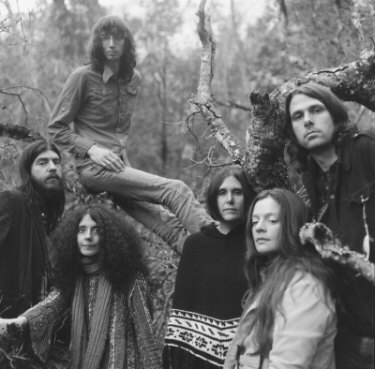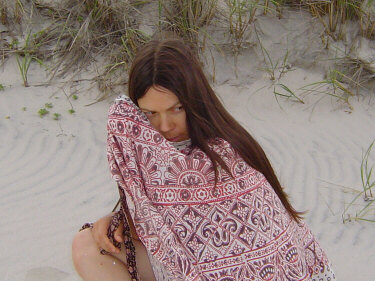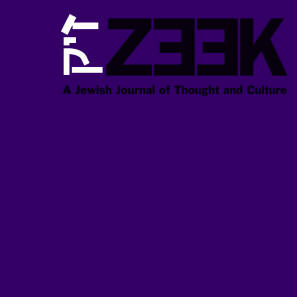 June 06
June 06
Contemporary Psychedelia: From Transcendence to Immanence
Peter Bebergal
1. Tripping Out and Tuning In

What is psychedelia?
What is loosely termed 'psychedelic music' has lately undergone a resurgence. Many mainstream musicians such as The Flaming Lips have drawn on its more accessible pop elements, drawing mainly from 60s British and American artists, while more alternative acts, such as the unequivocal Acid Mothers Temple and the splendid Swedish band Dungen, have moved deeper into the sounds of the 70s, infusing prog-rock with a more jam band sensibility.
At the leading edge of the psychedelic revival is a sub-genre often called psych folk, as it usually involves some fusion of traditional American and British folk elements alongside experimental forms, usually containing, but certainly not limited to, psychedelic tropes. Sometimes the folk sound takes precedent, and what is psychedelic is more subtle. In other cases, the folk elements are woven into noisy rock structures, often giving a kind of melancholia to discordant and aggressive frameworks.
There is no doubt that the rudiments of psychedelia are rather malleable. The use of electronics, looping, and found sounds, have helped turn a sometimes derivative musical genre into a serious creative platform. Yet it is still difficult to define precisely what psychedelia is, either musically or in terms of spiritual and mystical states of consciousness.
On the surface, the term “psychedelia” has long been associated with "Eastern religions," the amalgam of Hinduism, Buddhism, Taoism, and other traditions that became popular in the West in the 1960s. This is largely due to the efforts of American spiritual seekers who were discouraged by Jewish and Christian conceptions of God and saw other spiritual possibilities through the use of hallucinogens, only to find that states strikingly similar to those induced by LSD and mushrooms could also be found through "Eastern" meditation and spiritual practice. Ram Dass was one of the most important of these figures. Born Richard Alpert, Ram Dass was a young brilliant Jewish professor who, after getting kicked out of Harvard, along with Timothy Leary, for their infamous LSD research, went off to India in search of the kind of spiritual experience he had encountered on acid. After a few years of finding exactly that, he came back home and quickly became a leader of new spirituality of the soon-to-be baby boomers. Back home, Timothy Leary had already decided that any teachings he was looking for could be found in the drug itself and dubbed himself the “High Priest” of LSD.
The music of the 60s embraced both these approaches -- Leary’s almost maniacal insistence on the efficacy of the drug experience as spiritual, and Ram Dass’s more patently religious Krishna infused, “Be Here Now” lifestyle -- with a combination of spaced-out jams and Eastern sitar-soaked instrumentation, largely due to the influence of the Grateful Dead in San Francisco. On the one hand, mainstream musicians such as Pink Floyd and the Pepper-era Beatles, played with every manner of instrument and electronic effect available at the time. On the other hand, the 60s also saw a strain of neo-ludditeism, where many musicians wanted nothing more than to strip away all the conventions of modern society and return to a simpler approach. Think of the Band, Creedance Clearwater Revival, and, for that matter, the later Beatles of Let it Be (originally titled Get Back). The Rolling Stones provide a striking example of this contrast. Their 1967 release, Their Satanic Majesties Request is a sprawling psychedelic overload, replete with backward guitars and organs. Their next album, the 1968 Beggars Banquet could almost be a different band if not for Mick Jagger’s drawl. It is a stripped down roots-record, more blues than rock ‘n’ roll, and functioned as an internal and external reaction to the direction rock was ultimately moving.
Early on, however, psychedelic folk music was already its own sub-genre. Tyrannosaurus Rex (later the glam-rock stars T-Rex) and The Incredible String Band certainly drew from the same well as the more typical American psychedelic pioneers like the Grateful Dead, but along with rock ‘n’ roll and Eastern music, these bands called upon their non-American, but absolutely Western roots of British and Scottish folk. Despite how different this approach is from the swirling psych-out guitar jams of bands like the Dead, the intent was the same: the creation of a musically generated altered state, one that is reflective of the LSD experience.
Fast forward forty years. Today, in the US and Britain, there is a major underground movement that continues to build on the musical ideas of the psychedelic sixties, in particular those parts that held fast to the folk roots. Yet, unlike the Eastern-informed music of the 1960s, today's psychedelic artists are moving deeper and deeper into Western religious imagery and sensibility.
Gregory Weeks, a solo musician and member of the lush pastoral psych band Espers, explains this transition from East to West: “Eastern mysticism seems much more like an escape, whereas the natural world is there to be seen and felt. When something threatens the natural world, that threat is tangible, as are the rewards and examples of nature and environment.”
2. The Drone and the Guitar
This focus on the tangible is evident in the music of pysch folk, where the space-out of the jam has given way to more physical musical effect: the drone. Strictly speaking, a drone is any repetitive or sustained, usually dissonant chord, which creates a musical theme to ground the rest of a song or movement. Wagner’s Rheingold contains a classical version, but for the most part, the drone is usually found either in indigenous musics, such as that of the bagpipe, spiritual music such as the chant of Tibetan monks, and experimental and underground music, such as doom metal.
I can think of no more disconcerting and unsettling music than doom metal when it incorporates the drone. And yet there is something frighteningly gripping. Almost completely in opposition to any notion of transcendence, drone metal gets its energy from a subterranean volcanic core. The music can make you feel as if the very plates of the earth are shifting in your belly. Beyond the apocalyptic, which at its heart includes an idea of hope and final redemption, doom metal sounds the alarm that something is on its way and it isn’t good. And yet, the two most influential doom metal bands, Earth and Sunn0))), have both spoken in interviews about how theirs is a music intent on a kind of spiritual transport. The use of drone is key.
The almost inverted notion of transcendence, a kind of thick and muddy immanence, is what many psych-folk musicians have found in using the drone. Pat Gubler of the musical outfit PG Six, part of the Tower Recordings collective, plays largely traditional folk with deep and subtle drone elements woven throughout. Gubler remarks, “One thing that a drone does is gives the listener a very direct experience of resonance. It's a physiological experience. And performing drone music even more so, especially if you are singing. You are feeling the tones produced by your body.”
Gregory Weeks describes the drone’s relationship to psychedelia and spirituality: “The drone is absolutely the fastest way to induce the drug phenomena or mindset within a straight listener or audience. It's also a very introspective experience, for player and audience alike if done well. Drones are so simple, one would imagine they'd grow incredibly stale after several minutes, but instead they increase in interest and intensity in many cases. That's because listening to a drone is like watching a fire take hold. Invisible frequencies manifest in the ear much like an elusive green flame appears amidst the oranges and yellows. A fire never gets old, there's something primal and primordial about its engagement. Droning sonics are similarly primal in their appeal. They evoke strong responses, both emotional and physical within the listener and player alike.”
 In psych folk, while the drone helps sustain the potential for altered/spiritual states, it is the folk elements in the music that round out and layer the sound. Fursaxa, led by Tara Burke, is one of the more interesting bands that layers the drone and its ancient chant-like motifs with traditional folk, creating a unique kind of psychedelia. For Burke, using these elements is fairly deliberate, and yet, there is still something improvisational about it: “My folk elements are usually the instruments that I play -- acoustic guitar, mandolin, balalaika, accordion -- but when I craft a song I usually take the psychedelic approach and get in an altered state and compose my music. I also use various delay and loop pedals and such to achieve this.” These effects create an altogether otherworldly sound, and yet there is something eerily grounding about it. Burke continues: “For me music is more experimental and about blending different sounds together, sounds that can allow one to enter another world. I also hope that when people listen to my music they might think of plants and insects, or being lost in the woods, because these are things that are important to me and that I might be thinking about while making music.”
In psych folk, while the drone helps sustain the potential for altered/spiritual states, it is the folk elements in the music that round out and layer the sound. Fursaxa, led by Tara Burke, is one of the more interesting bands that layers the drone and its ancient chant-like motifs with traditional folk, creating a unique kind of psychedelia. For Burke, using these elements is fairly deliberate, and yet, there is still something improvisational about it: “My folk elements are usually the instruments that I play -- acoustic guitar, mandolin, balalaika, accordion -- but when I craft a song I usually take the psychedelic approach and get in an altered state and compose my music. I also use various delay and loop pedals and such to achieve this.” These effects create an altogether otherworldly sound, and yet there is something eerily grounding about it. Burke continues: “For me music is more experimental and about blending different sounds together, sounds that can allow one to enter another world. I also hope that when people listen to my music they might think of plants and insects, or being lost in the woods, because these are things that are important to me and that I might be thinking about while making music.”
Lower image: Tara Burke of Fursaxa









